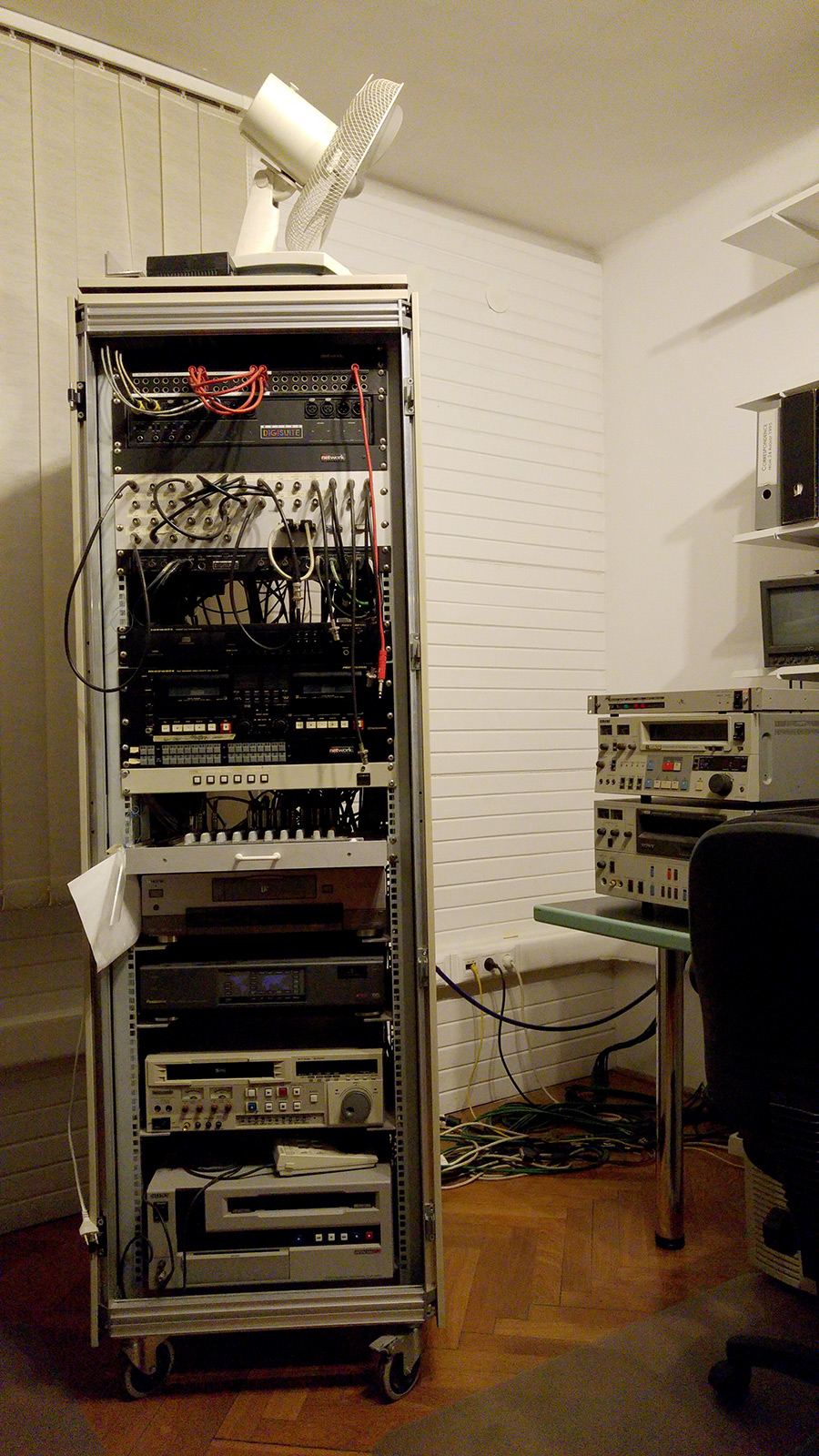The beginnings of video art in Hungary dates back to the early 1970s. Videography was under particularly strong state control at that time due to the limited availability of video technology, and thereby, it did not gain widespread, popular recognition. There were no forums dealing with the artistic and communicative potential of the medium, except for a few independent workshops existing either on the margins of professional film production, or in clubs stigmatized as “amateur” by the cultural politics of the time.
Primarily, visual artists experimented with the new possibilities offered by electronic imaging in the 1970s. Most of the earliest Hungarian video works are action- or performance recordings (Tibor Hajas, Károly Halász, Gergely Molnár, László Najmányi, János Szirtes, László Révész, and András Böröcz), but new types of recordings, documentation and clips soon emerged, and by the end of the 1980s, this had become an efficient medium of political resistance as well.
The C³: Center for Culture and Communication began in 1996. Initially, it was part of the Soros Foundation Network, but (as planned) it became a self-financing, independent legal entity in 1999. Its video archive was created in order to collect, treat, archive, digitalize and make available, Hungarian video artworks (including the works of Hungarian emigres).
The intention to create such an archive developed earlier. The founder, Miklós Peternák, created video art himself in the 1980s. Parallel to this, as an art historian and theoretician, he was involved with media art, carried out research, and initiated related projects.
One of the antecedents to the archive was the exhibition Film/Art at the Budapest Gallery in 1983. This exhibition chronologically presented the Hungarian history of the experimental moving image, and featured the works of nearly fifty artists (many of whom were visual artists and composers). Works were also grouped according to type within the historical sections.
The collection considers video art part of media art, as well as cinematography, but also keeps records of “proto-videos”: some photo-, text-, object- and installation-based works related to video that came into being before proper video equipment was available.
The history of the archive, which was open to medial experiments, continued with the publication of a web page containing basic information about the project in 1999. The next phase was the presentation of the video server of C³ in the Műcsarnok, on the occasion of the exhibition Media Model, as an up-to-date solution for exhibited videos.
The opportunity for the next significant development was made possible by the GAMA (Gateway to Archives of Media Art) project, financed by the eContentplus program of the EC. In this framework, a database was created and shared with all of the participating institutions, with a new metadata indexing scheme developed for the needs of media art.
Based on these developments, a new C³ database was published in 2013. Its novelty was the handling of the video archive and media art collection of C³ in an integrated manner. The former contains an abundance of early materials available for research offline, while the latter signifies the aggregation of media works produced with the help of C³ in the late 1990s or early 2000s. Numerous related documents are also included in the database.
Preservation is a priority for the archive, along with making materials available to the public. Due to the characteristics of the medium, the quality of the recorded tapes deteriorate in time, and can even become unplayable. The first step in the digitalization process was to obtain the equipment needed to play earlier formats (Beta, U-matic, VHS etc.), and to provide an up-to-date digital infrastructure.
To do this, first a copy is made on a DV tape in MPEG-4 format. Then it is placed on a disk. The part of the work made available to the public (a contract is prepared with each artist to establish the conditions of making the work public) is included in the online database. Some DVD copies were made earlier for research and viewing purposes, but this format is becoming outdated due to lack of players. Still, videotape is considered the most stable form of preservation.
While the facilities of the archive do not fully meet professional storage conditions (stable temperature, humidity), the tapes are held in cabinets, on shelves, or in other perfectly equipped places. Specialists sometimes employ unusual methods to preserve the playability of the tapes; for example in ZKM (Center for Art and Media Karlsruhe), they realized that older tapes should be baked a bit (certainly, the temperature matters and should be figured out first).
The history of Hungarian video art, and videography at large, is unexplored. Research is an explicit goal of the archive, but financial resources are not always available. Some of the collected materials have already been explored in detail (such as the documents related to the oeuvre of Gábor Bódy), but the team sees objectives ahead concerning collecting and research. The envisioned plan to establish a Museum of Media History and Media Art could provide a suitable frame for these activities.

